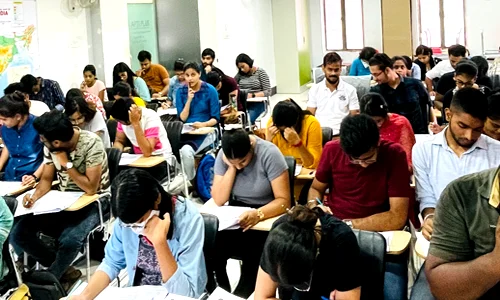



India’s first chairmanship of International IDEA highlights global trust in its electoral strengths. The role lets India present its election model, support Global South democracies, and shape global norms on integrity. At a time of democratic backsliding, it can drive inclusive, cooperative, and context-sensitive democratic reforms worldwide.
Click to View MoreAt the Johannesburg G20 Summit, India proposed six initiatives: a Traditional Knowledge Repository, Africa Skills Multiplier Program, Global Healthcare Response Team, drug-terror nexus framework, Critical Minerals Circularity plan and Open Satellite Data Partnership. These aim to boost health, security, technology and reinforce India’s role as the Global South’s voice.
Click to View MoreIndia-Canada ties sit at a tense crossroads. Strong trade and a vibrant diaspora contrast with mistrust rooted in security concerns and Khalistani extremism. The way forward lies in steady dialogue and deeper cooperation in critical minerals, clean energy, and aerospace while keeping economic engagement insulated from political friction.
Click to View MoreMajor powers like Russia, China, and the US are reconsidering their own nuclear testing, which puts pressure on India's voluntary nuclear testing moratorium. This global security shift requires India to re-evaluate its position to maintain a "Credible Minimum Deterrence" against new threats.
Click to View MorePakistan’s revival brings both stability and strategic risk for India. A stronger Pakistan may gain global leverage and shift its military focus eastward. India must respond by boosting economic power, fortifying security, and deepening global partnerships to maintain regional dominance with cautious, forward-looking strategy.
Click to View MoreIndia and ASEAN share a Comprehensive Strategic Partnership central to India’s Act East Policy and Indo-Pacific vision. Focused on connectivity, maritime security, and trade, it faces challenges from China’s assertiveness and project delays. Strengthening digital, maritime, and supply chain cooperation is key to regional stability and growth.
Click to View MoreIndia and Brazil’s strategic partnership strengthens South-South cooperation through defense, space, and trade collaboration. Targeting $20 billion bilateral trade by 2030 via the India-Mercosur PTA, both nations pursue balanced growth, multilateral engagement, and diversified sectors to build a resilient, future-oriented, and mutually beneficial relationship.
Click to View MoreIndia and Mongolia mark 70 years of diplomatic ties built on Democracy, Dharma, and Development. Their Strategic Partnership deepens through defence drills, India’s $1.7 billion refinery project, and mutual UN support, advancing India’s Act East and Mongolia’s Third Neighbour policies for a balanced Indo-Pacific.
Click to View MoreOver 1,200 Islamic scholars endorsed the 2019 Mecca Charter, promoting a moderate Islam. It rejects extremism, condemns terrorism, supports women’s empowerment, environmental protection, and national loyalty, reinforcing India’s secular, pluralistic values and fostering communal harmony and national integration.
Click to View MoreIndia–Australia relations in 2025 reflect growing strategic trust and operational cooperation across trade, defence, and technology. With ECTA, defence pacts, and industrial collaboration delivering results, both nations must now address trade imbalances and capacity gaps to consolidate gains and emerge as a stabilising force in the Indo-Pacific.
Click to View MoreThe West’s political and strategic unity is dissolving, creating a 'multi-polar West'. This fragmentation unlocks diplomatic opportunity for India. New Delhi can now strategically navigate multiple Western poles—leveraging the US for critical technology, France for defense, and the EU for trade—to reinforce strategic autonomy in the evolving global order.
Click to View MoreIndia and Qatar have strengthened their Strategic Partnership, advancing energy security, trade diversification, and digital collaboration. By leveraging LNG supplies, expanding non-hydrocarbon sectors, and engaging the Indian diaspora, both nations drive mutual economic growth and investment.
Click to View More
© 2025 iasgyan. All right reserved